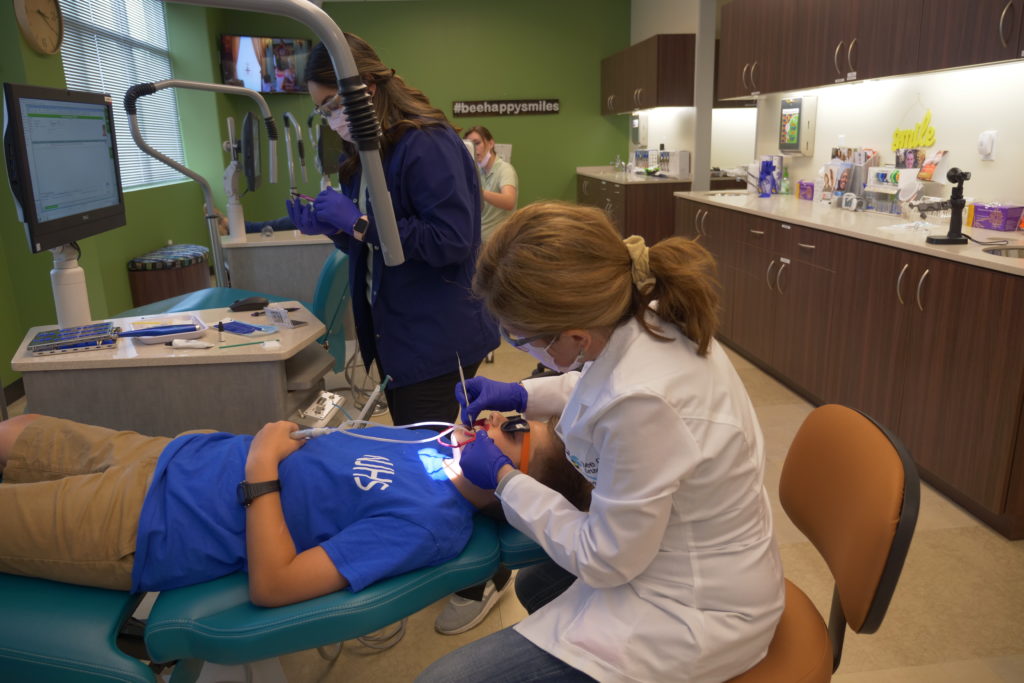Christmas is coming, and most of us are busy making holiday plans, checking off items on our shopping list, and hopefully taking a little time to stop and smell the hot cocoa! But it’s also open enrollment, with many families investing in a new health insurance plan, adjusting their existing one, or planning out their flex spending accounts (FSA) for 2019.
Each year around this time, we often have patients and parents ask us if treatment with Bee Cave Orthodontics is eligible for reimbursement through their FSA. Let’s take a look at what an FSA is, how to plan your contributions for the upcoming year, and what an FSA can be used for below!
What is a flexible spending account?
A Flexible Spending Account is as an employer-sponsored benefit that allows employees to pay for eligible medical expenses on a pre-tax basis. If you have one, a predetermined amount of money is placed into your account to pay for certain out-of-pocket health care costs not covered by your health insurance.
An FSA can save you money by reducing income taxes. Contributions made to a Flexible Spending Account are deducted from your pay in regular increments before any federal, state, or Social Security taxes are calculated, and they are not reported to the IRS. This allows you to decrease your taxable income and increase your spendable income, something we can all use a little more of!
In order to make the full contribution available to spend at the beginning of the year, flexible spending accounts are generally pre-funded. This means that leaving a company mid-year could leave you on the hook to pay back any spent funds that have not been covered by paycheck deductions yet, but this varies from employer to employer.
FSAs operate on a “use it or lose it” principle, meaning any amount that has not been spent by the end of the year is lost. This differs from a health savings account (HSA) which can have money added it to it indefinitely. The rules for this are fairly flexible, though. For instance, some employers will allow employees to carry over a capped amount in unused funds, while others may offer a grace period of 1-2 months in the coming year. Whatever your employer’s rules, it’s important to try and calculate the right amount to set aside every year so that you don’t end up with any unused money come December.
Planning FSA contributions for the upcoming year
In 2019, employees will be able to contribute $2,700 to their flex spending accounts, a slight increase from the 2018 limit of $2,650. In choosing an FSA amount, you may find it helpful to refer to these two simple rules of thumb:
If your individual out-of-pocket medical bills usually amount to $225 per month or more — or roughly $2,700 annually — contributing the maximum amount is a good choice.
If your medical expenses are generally low, it may be worth contributing only the total amount of approximate copays, as well as the expected dental and vision expenses for the next year.
While medical costs can be hard to predict, there are a few things you should take into consideration when planning contributions for the upcoming year. These include:
- Primary care visits
- Specialist office visits
- Any planned surgeries
- Prescriptions
- Medical devices
- Routine vision services
- Glasses or contact lenses
Any planned dental or orthodontic care should also be considered, including cleanings, dentures, crowns, fillings, plus braces and clear aligner therapy.
Although many flexible spending accounts will provide a debit card to pay for expenses, you should always save your receipts in a safe place in case a charge is rejected and you need to prove that expense.

What expenses does an FSA cover?
Any expense that is considered to be a deductible medical expense by the IRS (and not reimbursed through insurance) can generally be reimbursed through a flexible spending account. Some examples of this include:
- Medical, dental, surgical, chiropractic, psychiatric, and psychological visits
- Contact lenses and eyeglasses
- Qualified long-term care services and insurance premiums, associated nursing services, lab fees, and prescription medications
- Non-elective cosmetic surgery
- Eye surgery or Lasik
- Co-payments on covered expenses
- Deductibles
- Orthodontic treatment, including braces and clear aligner therapy
FSA and Orthodontics
Orthodontic treatment normally takes place over an extended period of time, so there are a few things to keep in mind regarding FSA benefits. Orthodontic care differs from other medical and dental procedures that require the actual service to be performed and paid for within the benefit period. While some patients will choose to pay for their orthodontic treatment in full, others may choose to make regular monthly payments. An FSA should allow reimbursement for prepaid orthodontic expenses up to the chosen amount as long as the payment was made during the benefit period.

We’re here to help you plan the future of your smile!
Bee Cave Orthodontics is committed to providing the more rewarding orthodontic experience possible for patients of all ages in Austin and the surrounding communities. Our team is here to help you figure out the best way to achieve excellent oral health and an incredible smile, whether you use an FSA, dental insurance, or a payment plan to do so! For more information on our services and payment options, get in touch with us today by clicking here or calling our office at 512.596.5623.



